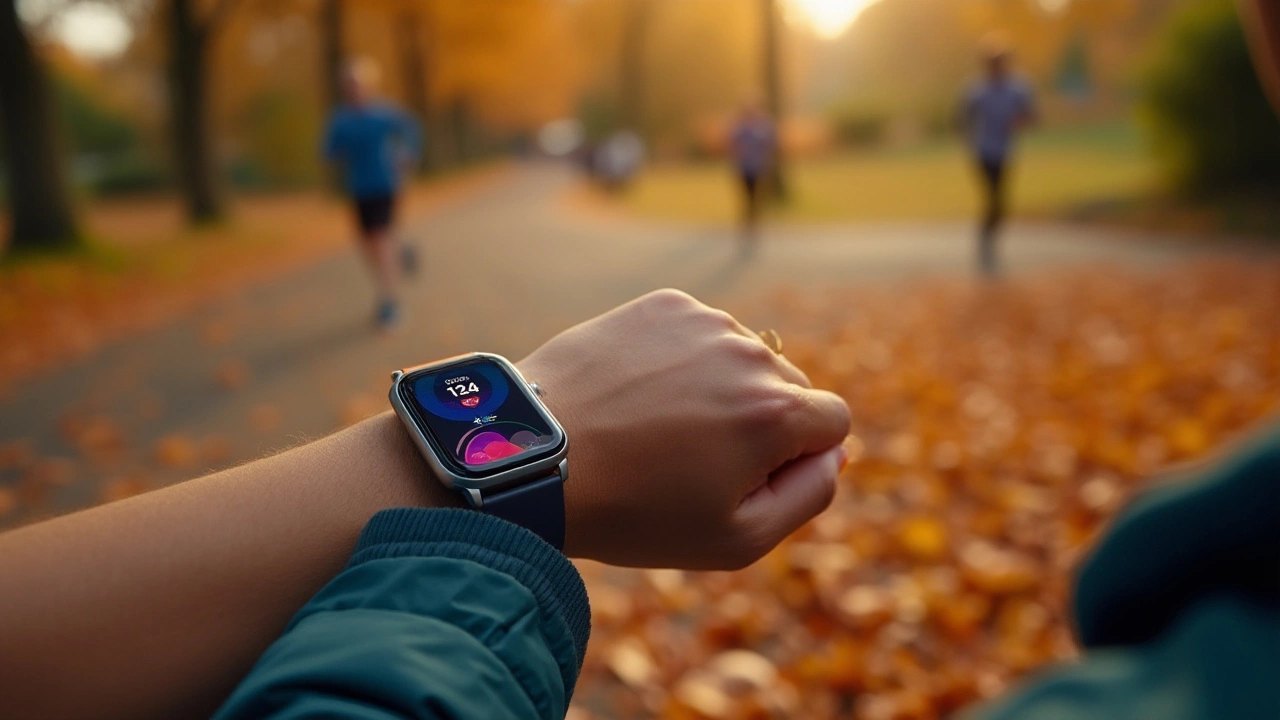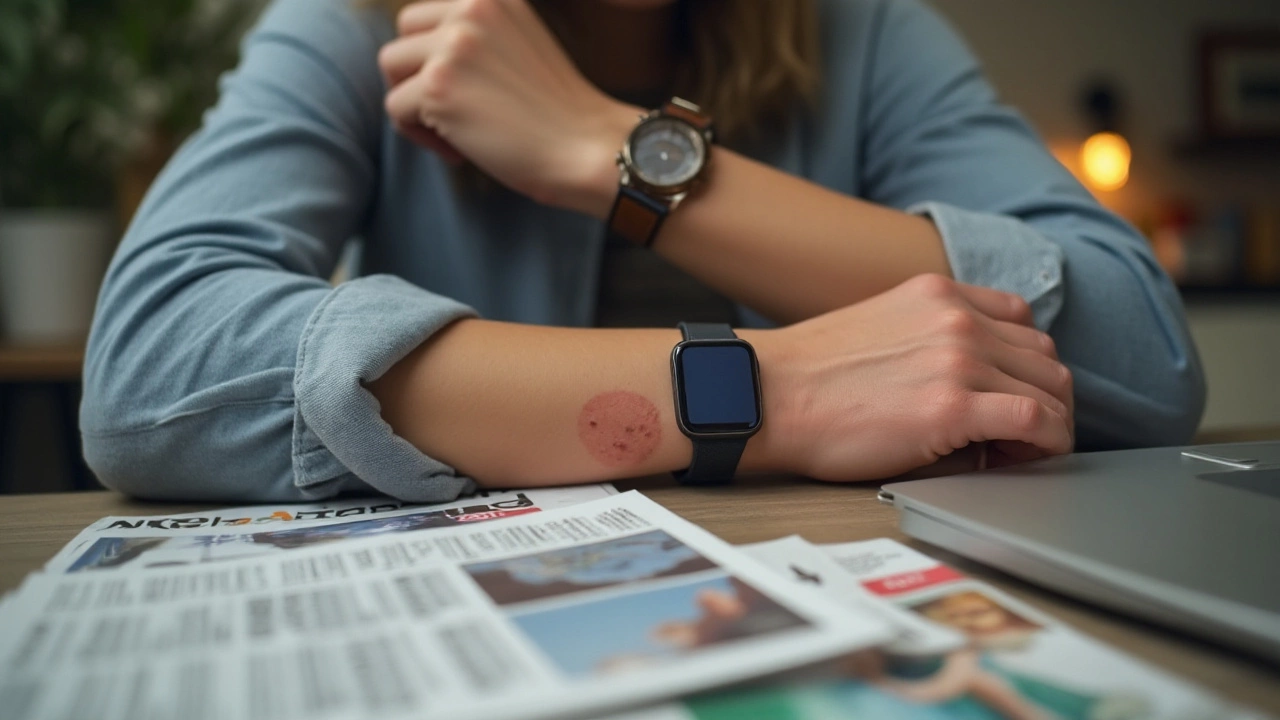
Smartwatches have woven themselves into the fabric of our daily lives. They're not just telling time anymore; they’re counting steps, measuring heart rates, and even reminding us to take a breather during a hectic day. With all of this data collection happening on our wrists, maybe you've wondered if there might be hidden risks lurking.
Let's dive into some of the potential concerns people have when it comes to these wearable wonders. We’ll explore whether there’s reason to be cautious about radiation exposure, what skin-related issues might arise, and how our digital companions could be influencing our mental well-being. Don’t worry, we’ll also talk about ways to stay smart and safe when using smartwatches.
- The Rise of Smartwatches
- Radiation Concerns
- Skin Irritation Issues
- Psychological and Behavioral Effects
- Tips for Safe Usage
The Rise of Smartwatches
In the early days of digital advancements, few could have predicted that a humble wristwatch would transform into a hub of personal technology. Yet, here we are, living in a world where the smartwatch is more personal assistant than timepiece. The inception of smartwatches can be traced back to the release of tech giant Apple’s Apple Watch in 2015, setting a benchmark for wearables. But even back then, the idea wasn’t entirely new; prototypes existed earlier, though they lacked the advanced capabilities and sleek design we associate with them today.
Since then, the fitness tracker revolution has emerged, prominently featured within smartwatches, accommodating a fastidious global interest in health and wellness. Smartwatches track steps, monitor heart rates, and many even assess sleep quality. According to market research, the wearable technology market is projected to reach approximately $100 billion by 2028, as more people integrate these devices into their daily routines. This immense growth points to a broadening acceptance and dependency on these devices.
Amidst this growth, brands have diversified their offerings. Companies like Fitbit and Garmin have developed watches focusing on fitness, while others provide tailored options for various user needs, like Samsung's offerings of tactical diversions or Garmin’s outdoor explorations. This variation has wildly expanded consumer choices and propelled smartwatches into being versatile gadgets rather than mere accessories.
"The smartwatch phenomenon marks a turning point in how technology meshes with daily life, offering connectivity, convenience, and health insights on our wrists," declares renowned tech journalist Jenna Wortham.
With each new software update and hardware iteration, these devices have evolved, seamlessly integrating with other smart technology in the home. Yet, the rise of smartwatches raises intriguing questions. How do they mold our behavior, and is there a subtle, yet significant, influence over how we track and interpret personal wellness? While the potential health impacts of radiation and electromagnetic fields are legitimate concerns, the benefits seem to outweigh the downsides for many. More studies continue to investigate these areas, aiming to better understand the long-term effects.
It's no secret: smartwatches have become an emblem of a tech-savvy lifestyle. People use them not only for fitness but as essential tools for communication, navigation, and even managing their schedules. The convenience of having these capabilities tethered to one’s wrist can't be overstated. While the innovation and appeal are clear, as technology integrates deeper into our lives, it is crucial to remain informed about its implications, both positive and negative, on our health and privacy.
Radiation Concerns
In the bustling embrace of modern technology, smartwatches have nudged themselves onto countless wrists, promising convenience and health tracking. Yet, with this closeness comes a less visible concern—radiation. Most smartwatches utilize Bluetooth technology to connect with our phones, emitting radiofrequency (RF) radiation. This type of radiation is non-ionizing, which means it doesn't have enough energy to remove tightly bound electrons from molecules, potentially making it safer than ionizing types like X-rays. However, some individuals express unease about the long-term exposure, even at lower energy levels. This apprehension mainly arises because these devices sit directly on your skin for potentially prolonged periods, unlike the intermittent use of a cellphone or laptop.
Laboratory research provides some insight into the effects of RF radiation, though the consensus is ongoing and complex. While the World Health Organization (WHO) states that the energy produced by portable devices does not pose a significant risk, a segment of the scientific community continues to scrutinize the subtler, chronic effects. A prominent study from the U.S. National Toxicology Program hinted at a weak link between high exposure and certain tumors in rats, though this doesn’t directly equate to smartwatch usage in humans. Studies in humans have yet to confirm any conclusive harm.
As stated by Dr. John Bucher, a senior scientist at the National Toxicology Program, "though there’s no immediate cause for alarm in casual use, being mindful of exposure remains key to informed health choices."
Users weighing these concerns might wonder how to mitigate potential risks while still enjoying the benefits smartwatches offer. One approach is to limit the duration of wear when constant data monitoring is unnecessary. Choosing configurations that deactivate non-essential services, such as Bluetooth connectivity when it isn't needed, can also help reduce exposure. People interested in further reducing risk might consider swapping the smartwatch to alternate wrists throughout the day, simply to provide short breaks from proximity to the skin. Thankfully, most find smartwatches' advantages substantially outweigh the doubts, especially when used sensibly.

Skin Irritation Issues
As people embrace the convenience of smartwatches, some wearers have stumbled upon an unexpected side effect: skin irritation. This problem manifests in various forms, from mild redness to more severe rashes. Several factors contribute to this, including the materials used in the watchbands and the prolonged wear time. In many cases, bands made of rubber or certain plastics can cause allergic reactions for those sensitive to particular compounds. It's not uncommon for folks to notice discomfort after extended periods, especially if there’s a lack of sufficient airflow or moisture, which can aggravate the skin.
Moreover, there are instances where people overlook the importance of proper hygiene. Sweat and grime, trapped beneath the band, create an environment ripe for irritation. Regular cleaning of both the watch and wrist area can mitigate these effects considerably. It’s fascinating, though, how something as high-tech as a smartwatch can cause issues so rooted in the basics of skin care. The watchmakers are increasingly aware of these issues, leading to the development of hypoallergenic bands and designs that allow for more air circulation. Nevertheless, it's up to the user to maintain good hygiene practices.
Interestingly, a study highlighted how awareness of such potential reactions is still limited among consumers. The study found that only a fraction of users who experienced skin irritation from fitness trackers reported it, perhaps perceiving it as a minor inconvenience or simply a product of their activity level. Likewise, increased research into user experiences could prompt more responsive designs in the future. But for now, vigilance about cleaning routines and awareness of skin reactions is key for those who wish to enjoy their wearable technology without discomfort.
Psychological and Behavioral Effects
The integration of smartwatch technology into our lives introduces more than just health tracking and convenience. There's also an emerging discussion on how these devices might be influencing our minds. With at-a-glance access to notifications, alerts, and reminders, smartwatches have a way of keeping us constantly connected. This accessibility, while seemingly beneficial, can blur the line between productivity and overload. Imagine being subtly nudged every few minutes—this constant intrusiveness can lead to stress and anxiety, as some users report feeling 'on edge' if they leave their fitness tracker at home by accident. Studies have suggested that such intensity in connectivity can push stress levels to unhealthy heights.
On the flip side, having a fitness companion that gently encourages more physical activity and recognizes achievements can foster motivation and a sense of accomplishment. Yet the same feedback can trigger negative self-assessment for those who might fall short of their goals. Devices categorizing activities into neat graphs and summaries sometimes cast an unwelcome spotlight on our perceived shortcomings, potentially affecting self-esteem. A researcher from the University of California noted,
"While smart devices aim to enhance health, they can also inadvertently create a pressure to outperform our expectations of ourselves."This observation calls attention to the delicate balance between motivation and unnecessary pressure.
The psychological footprint extends beyond simple notification dynamics. Imagine relying excessively on a device to inform of your every move—it can lead to what some psychologists term 'pavlovian reinforcement.' Users might begin associating specific behaviors with smartwatch updates, creating a loop of anticipation and response. Such cycles can affect choices and behavior outside of the technological environment, subtly shaping habits and decision-making patterns in areas like physical activity, diet, and even sleep. A recent study highlighted that individuals habitually checking their smart devices experience reduced quality of sleep, likely due to the mental association of alertness and engagement with the device. Surveillance of our own health metrics can verge into obsession, resulting in what's known as 'orthosomnia,' where attempting to optimize sleep data backfires and disrupts sleep quality.
The flipside to these concerns is the potential for smarter lifestyle changes. With the data that these devices provide, there is a newfound ability for individuals to better understand their own habits and make informed decisions. There's compelling evidence suggesting that wearable technology users are reporting better long-term health choices. Yet, making sure this technology serves the human rather than the other way around is crucial. As these smartwatch features become more personalized, they offer opportunities to foster introspection and a healthier lifestyle if managed thoughtfully. Blending awareness with moderation is key to unlocking their positive potential.

Tips for Safe Usage
Smartwatches have embedded themselves firmly into the rhythms of modern life, acting as extensions of our smartphones and as personal health monitors. While they bring convenience and a treasure trove of data to our fingertips (or more accurately, our wrists), it's vital to consider certain practices to ensure they're not doing more harm than good. One primary concern revolves around how these devices rest against our skin and the radiation they emit. To minimize any negative impact, it's recommended to periodically switch wrists to reduce continuous exposure to any single area. Doing so can help alleviate any irritation or discomfort from prolonged contact.
Being alert to smartwatch side effects starts with recognizing their impact on us, including potential behavior changes. It’s easy to become overly reliant on these gadgets, which might lead to unnecessary anxiety when notifications flood in. Allocating specific times to check alerts instead of responding immediately can foster better focus and peace of mind. An awareness of how your smartwatch affects your mental well-being can help moderate use and ensure it remains a helpful aid, not a source of stress or dependency. A study by Statista in 2023 found that around 25% of users experienced some form of anxiety related to overuse, emphasizing a balanced approach is crucial.
"Moderation in use can make all the difference in maintaining the benefits of wearable technology without unwanted effects," advises Dr. Emily Trent, a wellness technology researcher.
Another essential practice is to keep track of sanitary conditions. These devices collect dust, sweat, and skin particles, so regular cleaning is a must to prevent skin irritation. Use a soft, damp cloth to gently wipe both sides of the band and the watch surface. Making this a weekly habit can prevent unwanted germs and grime from accumulating. Furthermore, consider choosing a watch strap made from skin-friendly materials such as silicone or leather, and ensure it fits comfortably but not too tightly.
Adhering to Safe Charging Practices
Charging tips are significant when discussing wearable technology. Only use the original charger to prevent any damage from incompatible devices. Place the charger in a safe area where it won't be exposed to moisture, which can be harmful. It's also beneficial to remove the strap occasionally to extend its lifespan, allowing it to 'breathe.' This habit not only improves hygiene but also enhances long-term comfort. Keep these points in mind, and your smart wearable companion should continue to serve you well.
